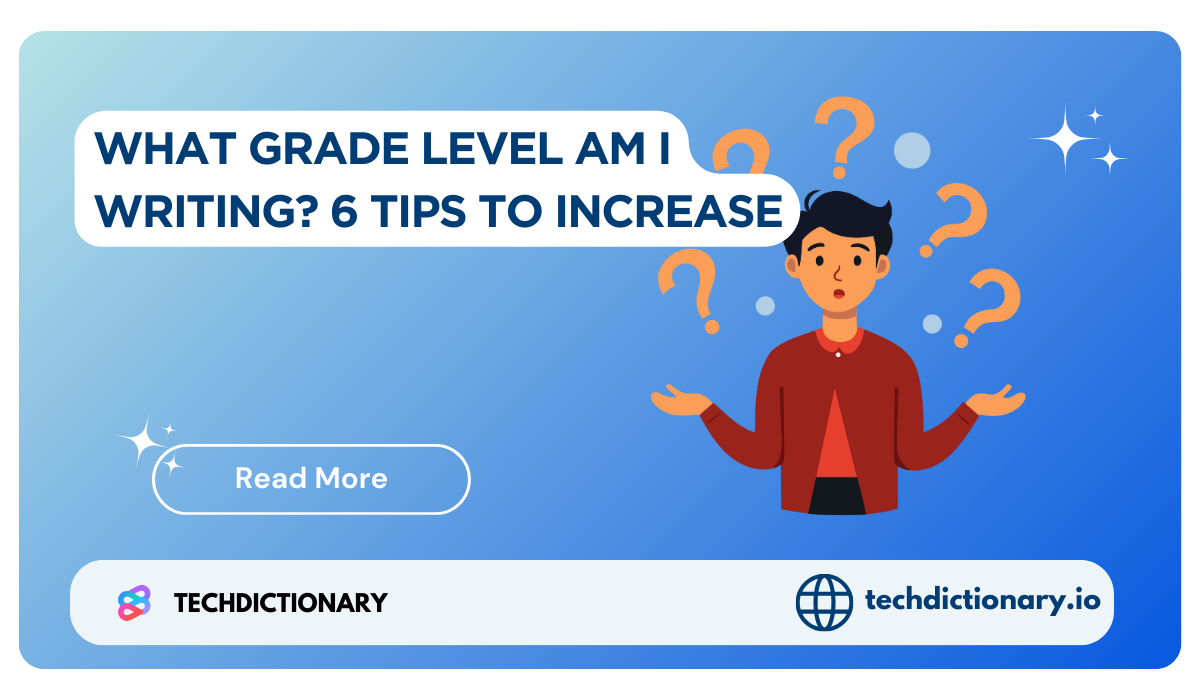
Have you ever asked, “What grade level am I writing?” Knowing the grade level can help make your content more accessible to your audience. Whether it’s an essay, blog post, or business material, assessing readability allows you to adjust complexity and improve engagement. This article will cover how to determine your writing’s grade level, its importance, and resources for reliable assessment.
What is readability? Readability relates to how easily the target audience can read and comprehend your content. It considers characteristics such as word choice, sentence structure, layout, font size, and design elements that affect how easily and fast readers can comprehend written information.
Why is readability important?
You can determine what grade level your writing is by using several formulas:
First of all, you can choose for yourself formulas to help you determine your score. There are several readability formulas you can refer to, like the Flesch-Kincaid Reading Ease, Gunning Fog Index, SMOG Index, Powers Sumner-Kearl, FORCAST Grade Level, etc. These tools look at factors such as:
Here is one of the most popular formulas: the Flesch-Kincaid Grade Level.
0.39 * (total words/total sentences) + 11.8 * (total syllables/total words) – 15.59
The results score corresponds to a US grade level of education. For example, if you obtain a score of 9, it signifies that your content is appropriate for readers in the ninth grade.
Let’s check the table of the results here:
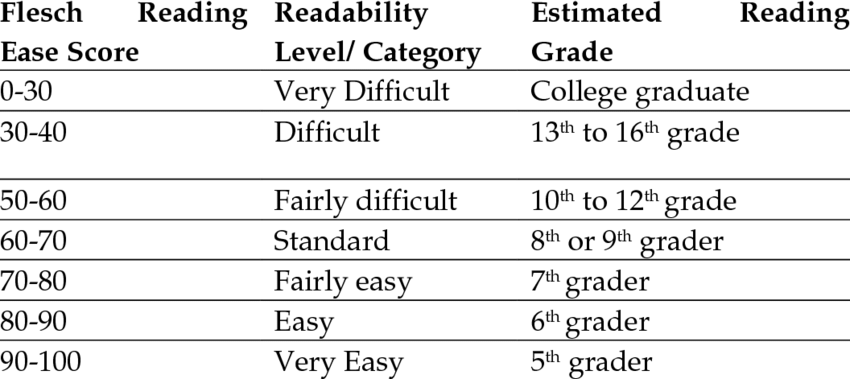
Flesch Reading Ease Score table. Cre: ResearchGate
Note: The higher the reading score, the easier a piece of text is to read.
For example, we use a random paragraph from ChatGPT-4 as below:
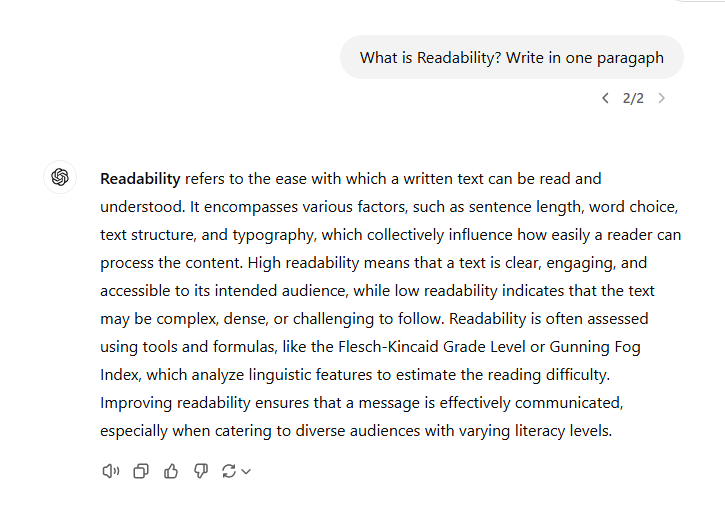
A random paragraph from ChatGPT-4
We start scoring this paragraph by using the Flesch-Kincaid Grade Level formulas and determining what grade level this writing is.
The Flesch-Kincaid Grade Level = 0.39 * (total words/total sentences) + 11.8 * (total syllables/total words) – 15.59 = 0.39 * (115/5) + 11.8 * (220/115) – 15.59 = 15.95
=> very difficult to read
This method’s drawbacks include the need to count numerous elements and perform manual calculations, which is time-consuming and prone to errors.
Online tools provide the quickest and most accurate approach to calculating your readability score. Numerous tools are available to assist you in this process, as well as tips for altering and adjusting your content to make it more readable.
Originality AI is a powerful tool that can help you check your readability score. By entering the URL, uploading, or copying and pasting your text, a readability checker can evaluate it. It determines scores by putting your text through many readability formulae. Additionally, Originality AI points out areas that need work, such as adverbs, lengthy phrases, and complicated vocabulary. It gives you useful information about the grade level of your work and is completely free.
For example, we use the Originality AI tool to help us score that same paraphrase as above. Here is the result:
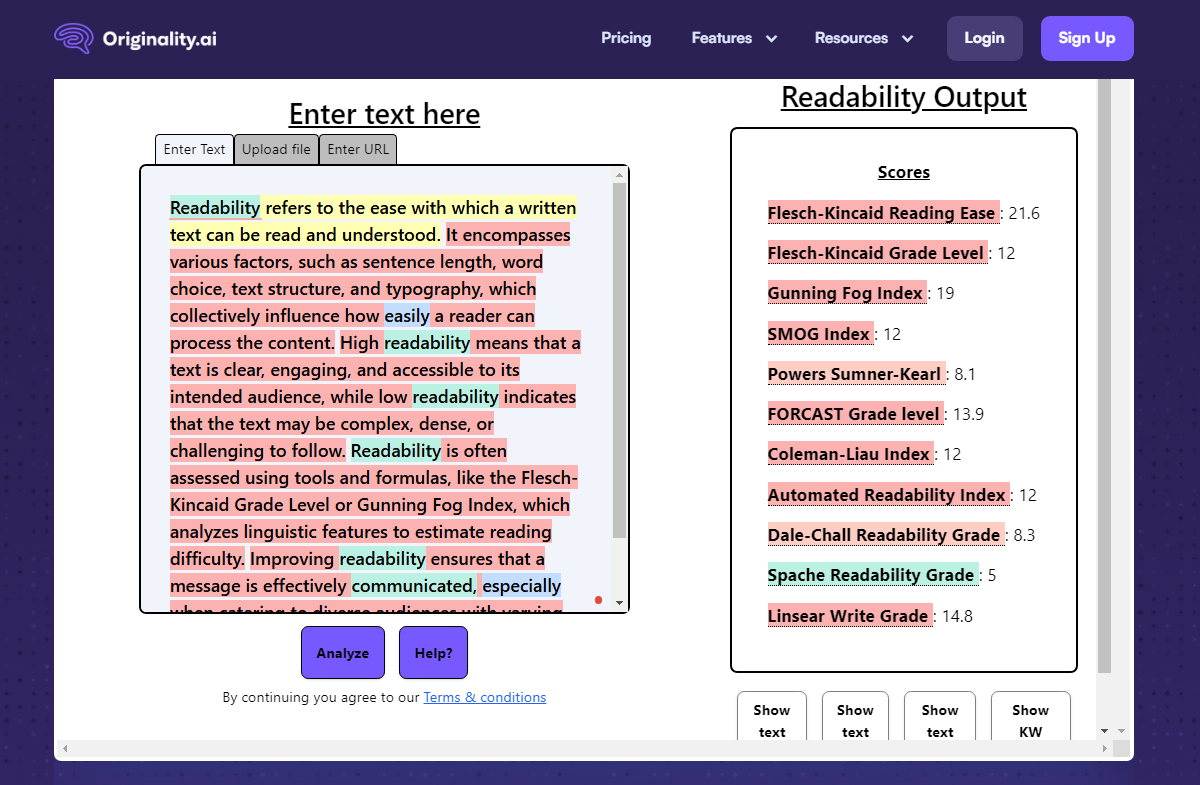
What Grade Level Am I Writing? Originality AI checker
Originality AI allows you to analyze scores on multiple scales, providing a comprehensive overview to verify your results. The output is user-friendly, with sentences that require improvement highlighted in red, making it easy for you to edit and enhance the readability score.
When writing for SEO to rank on Google, the ideal reading level often falls between a 7th to 9th-grade level (Cre: Topic Ranker Blog). The following explains why and how this range aids in ranking:
Maybe You Are Interested: Can Google Detect AI Content? 5 Tips to Avoid Penalization
If you notice that your content is difficult to read, let’s take steps to improve its readability. The following are some of our 5 suggestions:
We use these tips to enhance the readability of the paragraph above, resulting in improved clarity after editing.
“Readability relates to how easily readers can understand a document.
It includes various elements that influence how easily a reader can digest the content. Here are some of them:
High readability shows that a document is clear, engaging, and accessible to its intended audience. In contrast, the lower one indicates that the content is complex, dense, or difficult to navigate.
Readability is often assessed using tools and formulas, like the Flesch-Kincaid Grade Level or Gunning Fog Index. These tools analyze linguistic features to estimate reading difficulty. Improving this score ensures that a message is effectively digested. This is essential when catering to diverse audiences with varying literacy levels.”
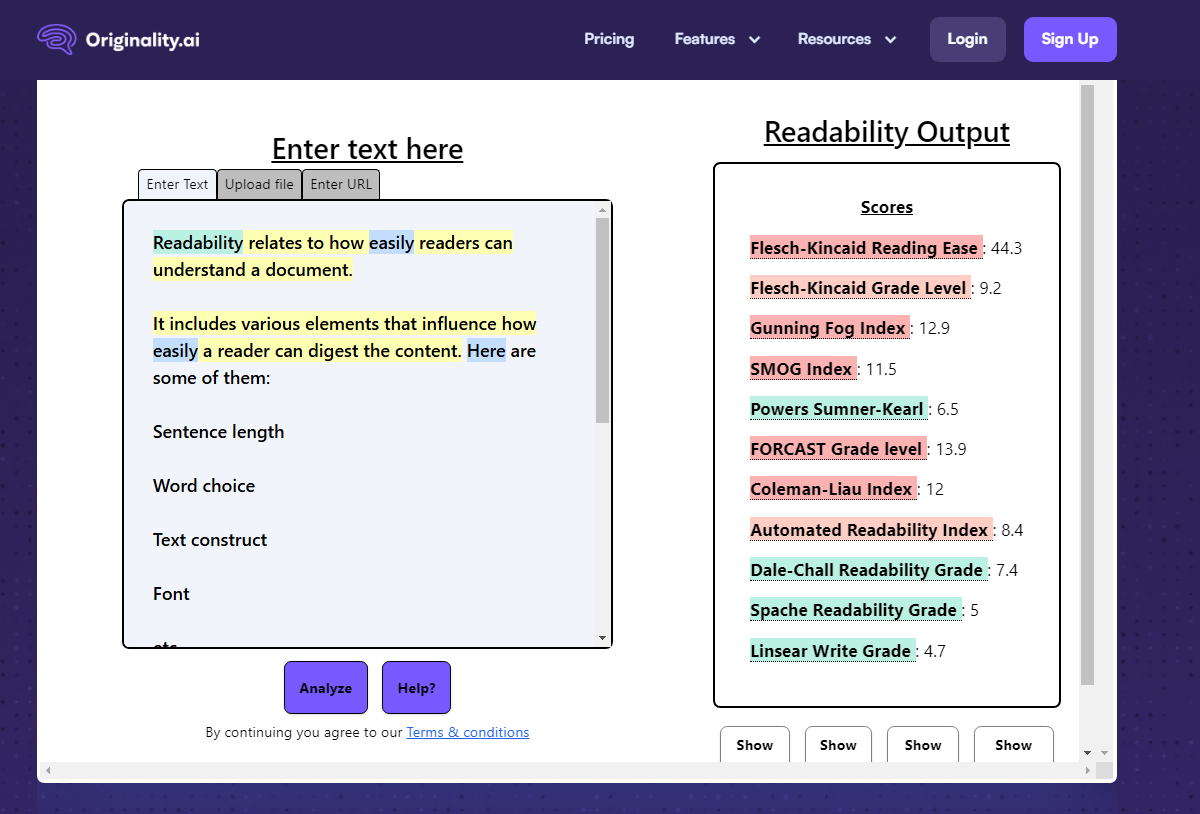
Readability results from Originality AI after applying tips
The readability score has significantly improved from 21.6 to 44.9 using the simple tips mentioned above.
In summary, figuring out “what grade level am I writing” is a useful method of assessing its readability and appropriateness for the target audience. By analyzing elements like sentence length and word choice, several tools and formulae, including Originality AI, provide insights into the complexity of your work. In the end, changing your writing’s grade level can improve clarity and increase the impact of your message on your target audience.

